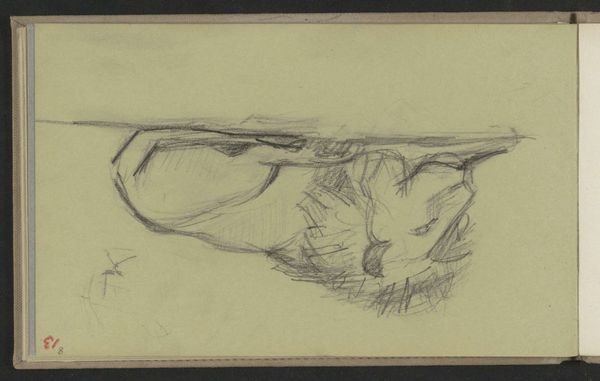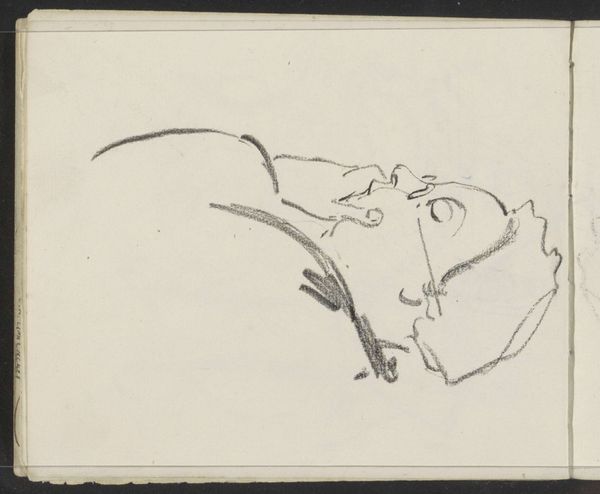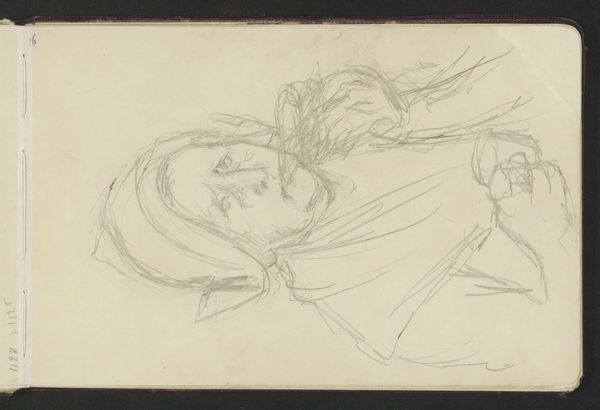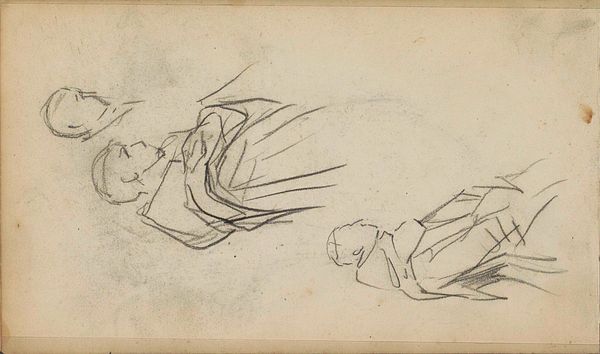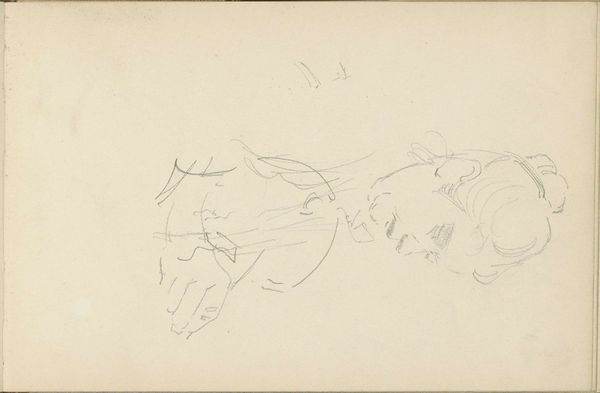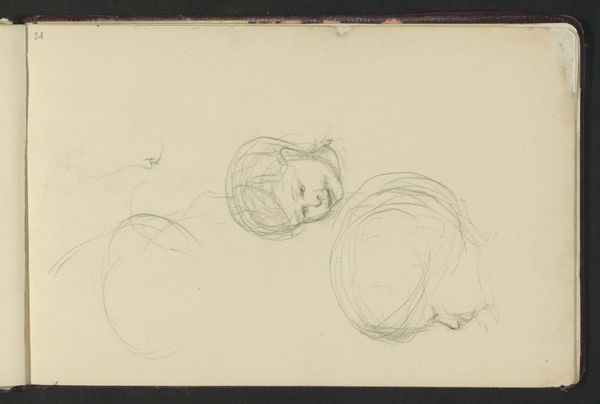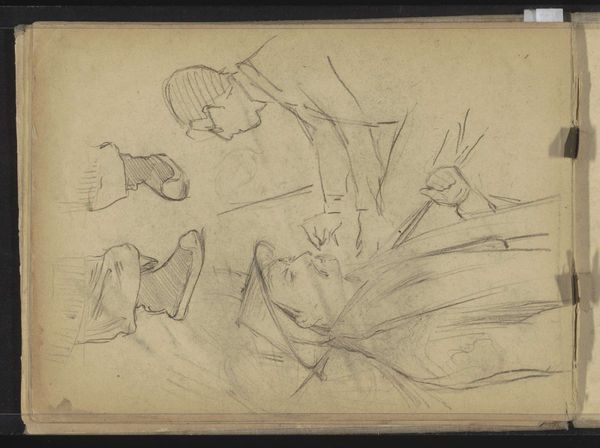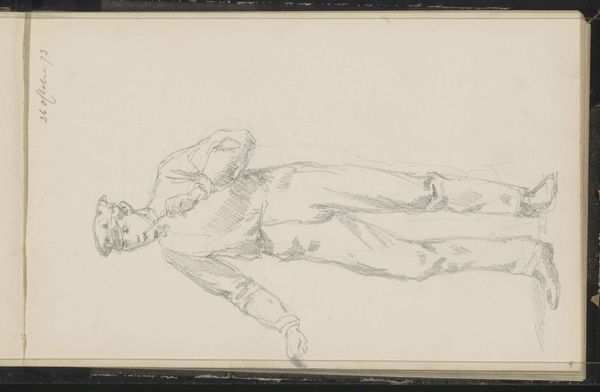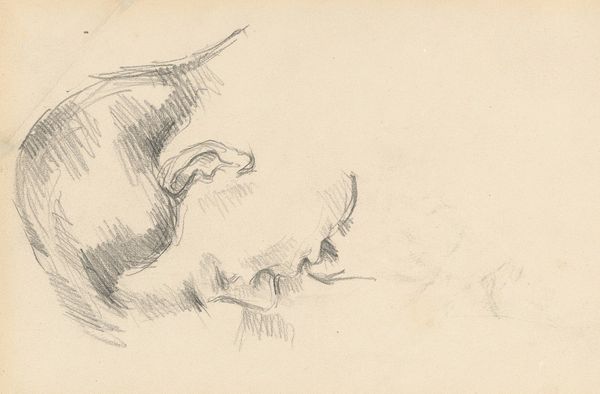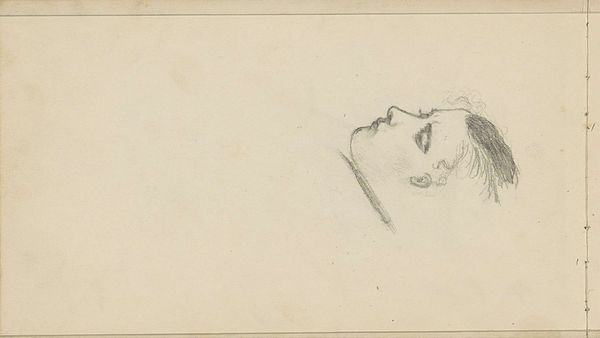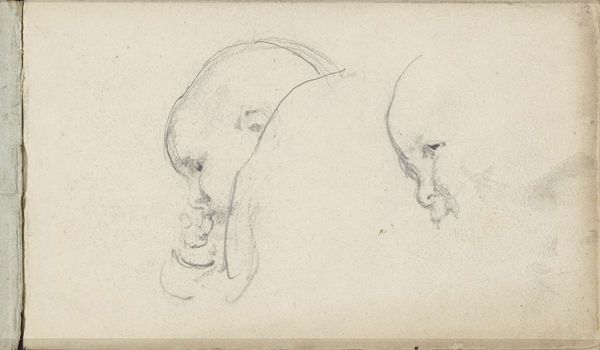
Vrouwenkop en een kind dat het hoofd met de linkerhand ondersteunt 1834 - 1911
0:00
0:00
jozefisraels
Rijksmuseum
drawing, paper, pencil
#
portrait
#
drawing
#
amateur sketch
#
toned paper
#
light pencil work
#
dutch-golden-age
#
sketch book
#
incomplete sketchy
#
paper
#
personal sketchbook
#
ink drawing experimentation
#
pen-ink sketch
#
pencil
#
sketchbook drawing
#
academic-art
#
sketchbook art
#
realism
Copyright: Rijks Museum: Open Domain
Jozef Israëls made this pencil drawing of a woman and child. Though undated, Israëls was active during a time of rapid social change in the Netherlands, and was known for his empathetic depictions of working-class families. In this sketch, Israëls seems to be studying the relationship between mother and child. The positioning of the child’s head in the mother’s hand suggests both tenderness and the burdens of care. Here, the artist seems to be grappling with the public role of art to address and reflect upon pressing social issues. Was it the artist's intention to promote a particular vision of family life, or to prompt viewers to confront uncomfortable realities? To understand Israëls's work fully, one must consider the cultural institutions and socio-economic conditions that shaped it, using a wide array of research resources. Art history shows us that the meaning of a work is not fixed, but contingent on its ever-changing social context.
Comments
No comments
Be the first to comment and join the conversation on the ultimate creative platform.


